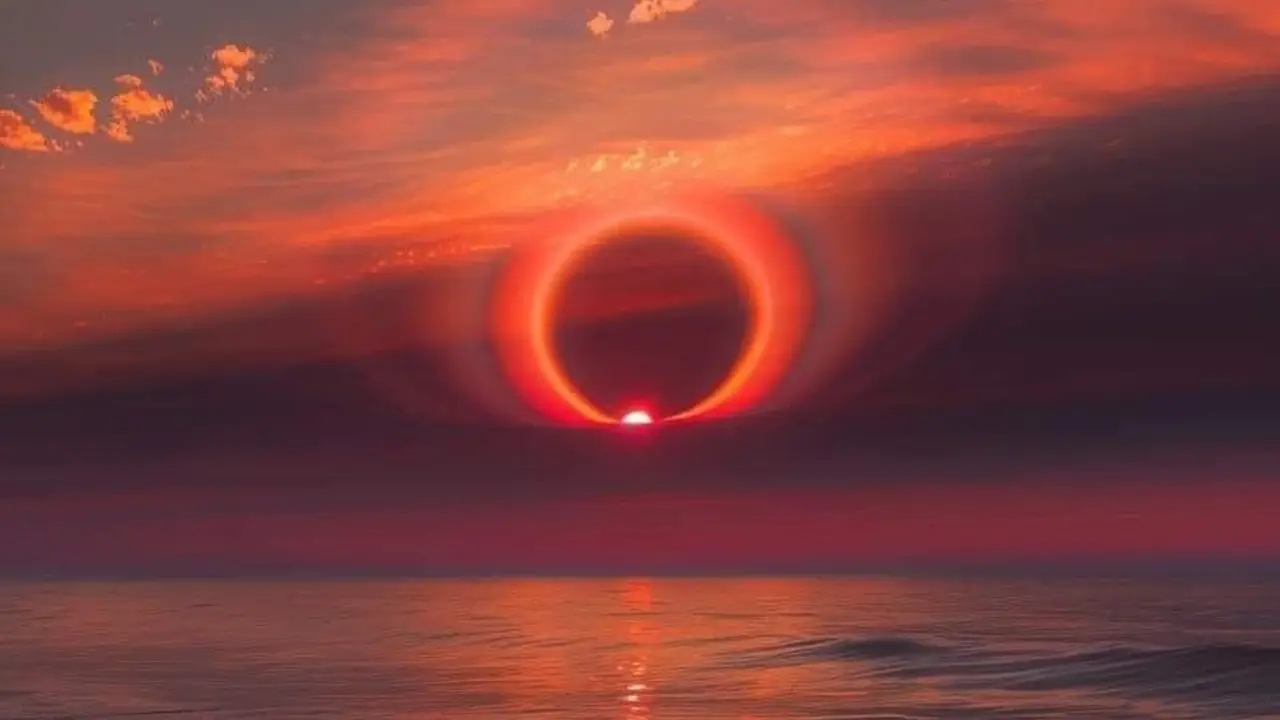Nature never ceases to amaze with its breathtaking displays, and one such phenomenon is the spectacular halo that sometimes graces the sky during sunrise. This awe-inspiring event not only captivates onlookers but also provides a fantastic opportunity for photographers and nature enthusiasts to witness the wonders of the natural world.
What is a Halo?
A halo is an optical phenomenon produced by light interacting with ice crystals suspended in the atmosphere. These ice crystals, typically found in cirrus or cirrostratus clouds, act like prisms and mirrors, bending and reflecting light in such a way that a ring or circle of light appears around the sun or moon. While halos can occur around both celestial bodies, their appearance during sunrise or sunset adds an extra layer of beauty due to the warm hues of dawn and dusk.
The Science Behind the Sunrise Halo
The formation of a halo at sunrise involves several key factors:
Ice Crystals: High-altitude clouds composed of tiny ice crystals are essential for halo formation. These clouds are usually located at altitudes of 20,000 feet or higher.
Angle of the Sun: The low angle of the sun during sunrise or sunset causes its light to pass through a thicker layer of the atmosphere. This angle allows the light to interact more effectively with the ice crystals, enhancing the halo effect.
Light Refraction and Reflection: As sunlight passes through the hexagonal ice crystals, it is refracted (bent) and reflected. The specific angles at which this occurs determine the size and brightness of the halo.
Capturing the Perfect Sunrise Halo Photograph
For photographers, capturing a sunrise halo is a thrilling experience. Here are some tips to help you get the perfect shot:
Timing is Key: Be ready before sunrise to set up your equipment and find the ideal location. The best halos are often visible just as the sun begins to rise.
Use a Tripod: To capture the fine details of the halo, use a sturdy tripod to avoid camera shake and ensure sharp images.
Wide-Angle Lens: A wide-angle lens will help you capture the entire halo along with the surrounding landscape, providing a more dramatic composition.
Adjust Exposure: Since the sun is a bright light source, you may need to adjust your exposure settings to prevent overexposure and capture the subtle details of the halo.
Polarizing Filter: Consider using a polarizing filter to reduce glare and enhance the colors of the sky and halo.
The Significance of Halos in Culture and History
Halos have held various symbolic meanings across different cultures and historical periods. In ancient times, halos were often seen as omens or divine signs. They were sometimes interpreted as messages from the gods or indicators of significant events. In modern times, while we understand the scientific explanation behind halos, they continue to inspire awe and wonder, reminding us of the beauty and complexity of the natural world.
Conclusion
Witnessing a spectacular halo during sunrise is an unforgettable experience that highlights the interplay between light and ice in our atmosphere. Whether you are a photographer looking to capture this stunning phenomenon or simply a nature lover eager to experience its beauty, the sunrise halo is a testament to the wonders of our natural world.
By understanding the science behind halos and knowing how to photograph them, you can fully appreciate and document this extraordinary display. So, the next time you find yourself up early, keep an eye on the sky and be prepared to witness one of nature’s most enchanting spectacles.




